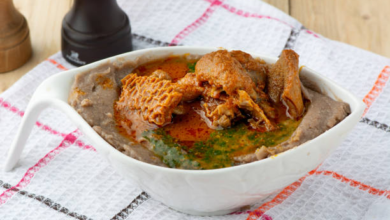Bully Stick for Dogs with Sensitive Teeth: What to Know

Dogs love to chew, but if your pup has sensitive teeth, choosing the right chew can be tricky. Bully sticks are a popular treat for many dogs, but are they suitable for those with sensitive teeth? In this blog, we’ll explore whether a bully stick is a good option for your dog, and what you should consider when offering it to a dog with dental sensitivities.Visit: https://j1petsupplies.com/
What is a Bully Stick?
A bully stick is an all-natural dog chew made from beef pizzle. It’s fully digestible and provides mental stimulation, dental benefits, and a healthy way to satisfy a dog’s natural chewing instinct. These sticks are available in various sizes and thicknesses, making them a versatile option for different dog breeds and chewing styles.
Why Dogs with Sensitive Teeth Need Special Attention
Dogs can develop sensitive teeth due to age, dental disease, or injury. Chewing on hard objects may cause discomfort, and in some cases, it can exacerbate existing dental issues. That’s why it’s important to choose chews that are soft enough to avoid causing pain, but durable enough to still provide the benefits of chewing.
Signs Your Dog Has Sensitive Teeth
- Reluctance to chew or play with toys
- Dropping food or chews after picking them up
- Whining when eating or chewing
- Visible tartar buildup or inflamed gums
Can Dogs with Sensitive Teeth Enjoy Bully Sticks?
Yes, dogs with sensitive teeth can still enjoy bully sticks, but there are a few considerations to keep in mind.
1. Choose the Right Size and Texture
Bully sticks come in different sizes and thicknesses, so choosing a softer, thinner stick is key for dogs with sensitive teeth. A thinner bully stick will be easier for your dog to chew without putting too much pressure on their teeth.
Visit: https://j1petsupplies.com/treats/
- Thin or Standard Bully Sticks: Opt for a bully stick that isn’t too thick or hard. Thinner versions are softer, which can be more comfortable for dogs with dental issues.
- Braided Bully Sticks: Braided bully sticks are another option. These are softer and can provide the chew your dog needs without being too tough on their teeth.
2. Soak the Bully Stick Before Giving It to Your Dog
Soaking a bully stick in water or low-sodium broth can soften it, making it easier for dogs with sensitive teeth to chew. This method adds moisture, which helps reduce the hardness of the bully stick while maintaining its chewable nature.
- How to Soak: Place the bully stick in a bowl of water or broth for a few minutes before offering it to your dog. This softens the texture and reduces the risk of discomfort.
3. Monitor Chewing Time
Limiting chewing sessions is important for dogs with sensitive teeth. Even if you’ve softened the bully stick, excessive chewing can still lead to discomfort or exacerbate dental problems.
- Limit to 10-15 Minutes: Set a time limit for your dog’s chewing session. A short, controlled session will allow your dog to enjoy the bully stick without overworking their sensitive teeth.
Dental Health Benefits of Bully Sticks
Even for dogs with sensitive teeth, bully sticks can offer dental health benefits. Chewing helps scrape away plaque and tartar, keeping gums healthier and reducing the risk of dental disease.
- Gentle Cleaning: The texture of a softened bully stick can still help remove plaque and tartar from your dog’s teeth without causing irritation.
- Natural Alternative to Rawhide: Unlike rawhide, which can be too tough and risky for dogs with sensitive teeth, bully sticks are fully digestible and softer, making them a safer option.
Alternatives to Bully Sticks for Dogs with Sensitive Teeth
If you find that bully sticks are still too tough for your dog, consider other chew options specifically designed for dogs with sensitive teeth.
- Soft Chews: Look for soft dental chews that are formulated to be gentle on sensitive teeth while still promoting dental health.
- Rubber Chew Toys: Rubber toys with soft textures can provide a safer alternative to traditional chews. These toys can help relieve discomfort without damaging your dog’s teeth.
How to Tell if a Bully Stick is the Right Fit
It’s essential to observe your dog while they’re chewing to ensure that they aren’t experiencing discomfort.
- Monitor Your Dog: Pay attention to how your dog reacts when chewing. If they show signs of discomfort, such as whining or refusing to continue chewing, remove the bully stick and try a softer alternative.
- Dental Checkups: Regular dental checkups with your veterinarian are key to managing your dog’s dental health and ensuring that their teeth stay in good condition.
Conclusion: Safe Chewing for Dogs with Sensitive Teeth
Bully sticks can still be a great option for dogs with sensitive teeth as long as you choose the right type and take steps to soften the chew. By selecting a thinner or braided bully stick, soaking it before giving it to your dog, and limiting chewing time, you can help your dog enjoy a healthy and satisfying chew without putting strain on their sensitive teeth. Always monitor your dog while they chew and consult with your vet if you have any concerns about your dog’s dental health.





